On October 5, we received a delivery notice about A105 socket pipe fittings from Morocco. The customer required a more urgent delivery time, so our colleagues in charge of shipping immediately to arrange the shipment. The goods were then shipped to Shanghai on the 8th and were received on time.
Our high efficiency has been recognized by customers, and it has also implemented our company’s business philosophy of “providing high-quality products, technical support and good after-sales service for customers”.
What is the A105 Socket Pipe Fittings
A105 socket pipe fittings are a commonly used type of pipe fittings. Carbon steel socket fittings are made of carbon steel as the main material and are used for connections in pipeline systems. The main feature is the socket structure. It consists of a socket and a spigot. The spigot end is inserted into the socket end, and a sealing connection is achieved through sealing materials. This structure is relatively convenient when installing pipelines and does not require complex welding equipment. It is especially suitable for some occasions where welding is not convenient or where the flexibility of pipeline connection is required to be high.
Carbon steel socket fittings are widely used in pipeline systems in petroleum, chemical, natural gas and other industrial fields to transport various media. Due to its excellent corrosion resistance and high temperature resistance, carbon steel socket fittings are also suitable for pipeline systems in food, pharmaceutical, shipbuilding and other industries.
Specification of Socket Pipe Fittings
| Size: | 1/4″ to 4″ ( DN6 to DN100) |
| Pressure Rating: | Class 3000, 6000, 9000 LBS |
| Standard: | ASME 16.11 – Socket Welding and Threaded Forged Fittings MSS SP-79 – Socket Welding Reducer Inserts MSS SP-83 – Socket Weld Union MSS SP-95 – Swage(d) Nipples and Bull Plugs BS 3799 – Specification for Steel Pipe Fittings |
| Type: | socket weld elbow, tee, cross, cap, coupling, boss, lateral, reducer insert and union. |
| Material: | ASTM A105, A350 LF2/LF3, A182 F5, F9, F11, F12, F22, F91, F304/304L, F316/316L, F317, F310S, F321, F347, F904. |
Materials of Carbon Steel Socket Pipe Fittings
ASTM A105 Chemical Composition
| CHEMICAL | LIMITS | C | Mn | P | S | Si | Cu | Ni | Cr | Mo | V |
| ASTM A105 | MIN | 0.60 | 0.10 | ||||||||
| MAX | 0.35 | 1.05 | 0.035 | 0.040 | 0.35 | 0.40 | 0.40 | 0.30 | 0.12 | 0.08 |
The manganese content in A105 socket pipe fittings is generally 0.60%~1.05%.Manganese mainly plays the role of deoxidation and desulfurization in carbon steel, and can also improve the strength and toughness of steel. It can form manganese sulfide with sulfur, reducing the effect of sulfur on the hot brittleness of steel.
The silicon content is between 0.10% – 0.35%. Silicon is an effective deoxidizer that can increase the strength of steel. It helps to improve the overall strength of pipe fittings, and can improve the fluidity of molten steel during the casting process, which is beneficial to the forming of pipe fittings.
Mechanical Properties
The maximum carbon content in A105 is 0.35%. Carbon is an important element that determines the strength of steel. The right amount of carbon can increase the hardness and strength of steel.
The manganese content is generally 0.60% – 1.05%. Manganese mainly plays the role of deoxidation and desulfurization in carbon steel, and can also improve the strength and toughness of steel. It can form manganese sulfide (MnS) with sulfur, reducing the effect of sulfur on the hot brittleness of steel.
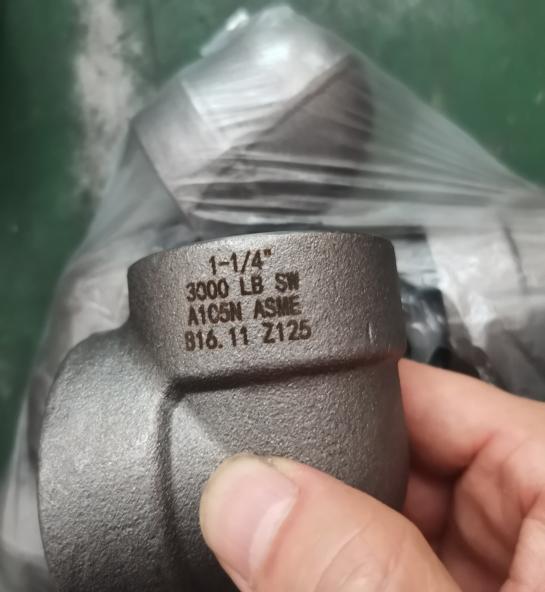
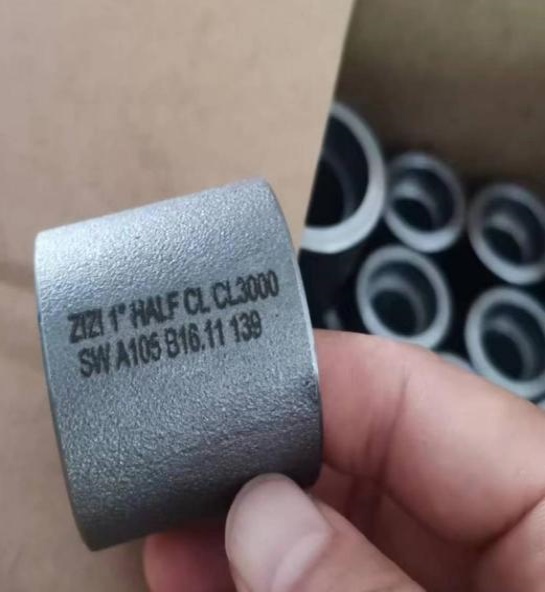
Inspection of A105 Socket Pipe Fittings
The inspection of A105 socket pipe fittings has different inspection standards according to different types. First of all, the dimensions such as the depth of the socket and the length of the spigot must meet the relevant standards. Measure the outer diameter, inner diameter and other dimensions of the fittings, and their deviations should be within the allowable range. If it is a pipe fitting with angle requirements such as elbows and tees, the angle deviation must meet the standard. For socket and spigot fittings with a small nominal diameter (such as below DN50), the inner diameter deviation may be controlled at around ±0.5mm; while for fittings with a larger nominal diameter (such as DN200 and above), due to the relatively large cumulative effect of manufacturing and installation tolerances, the inner diameter deviation may be allowed to be within ±1.5mm.
The chemical composition of carbon steel is tested to ensure that the content of elements such as carbon, silicon, manganese, sulfur, and phosphorus meets the corresponding standards. For example, excessive sulfur and phosphorus content will reduce the toughness and weldability of carbon steel.
Latest News
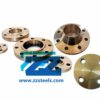 02 8 月 2019Copper Nickel Flanges UNS C70600Zizi offers ISO certified copper nickel flanges, stores large quantity of Cu-Ni 90/10 weld neck flan...
02 8 月 2019Copper Nickel Flanges UNS C70600Zizi offers ISO certified copper nickel flanges, stores large quantity of Cu-Ni 90/10 weld neck flan... 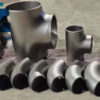 29 7 月 2019Stainless Steel Buttweld Fittings ManufacturerZizi is stainless steel buttweld fittings manufacturer, we offer stainless steel pipe elbow, tee, ca...
29 7 月 2019Stainless Steel Buttweld Fittings ManufacturerZizi is stainless steel buttweld fittings manufacturer, we offer stainless steel pipe elbow, tee, ca... 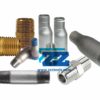 19 7 月 2019Steel Pipe Nipple Types, Dimensions and MaterialsBasic pattern of steel pipe nipple is a short piece of pipe with threads at both end or at one end....
19 7 月 2019Steel Pipe Nipple Types, Dimensions and MaterialsBasic pattern of steel pipe nipple is a short piece of pipe with threads at both end or at one end....
